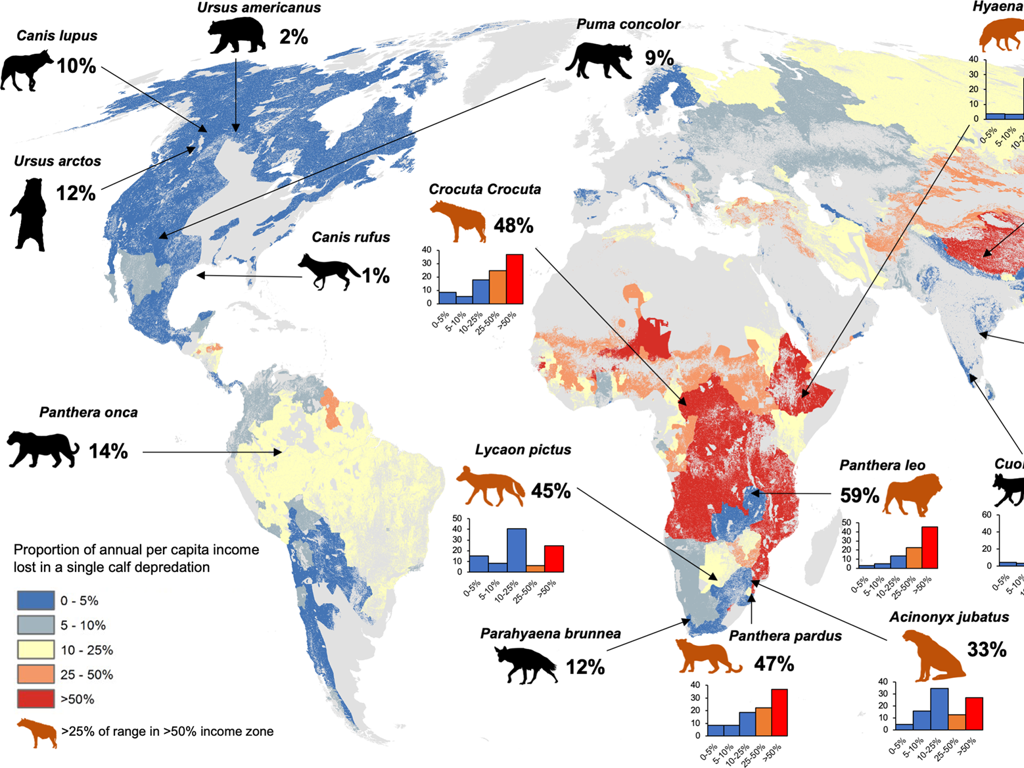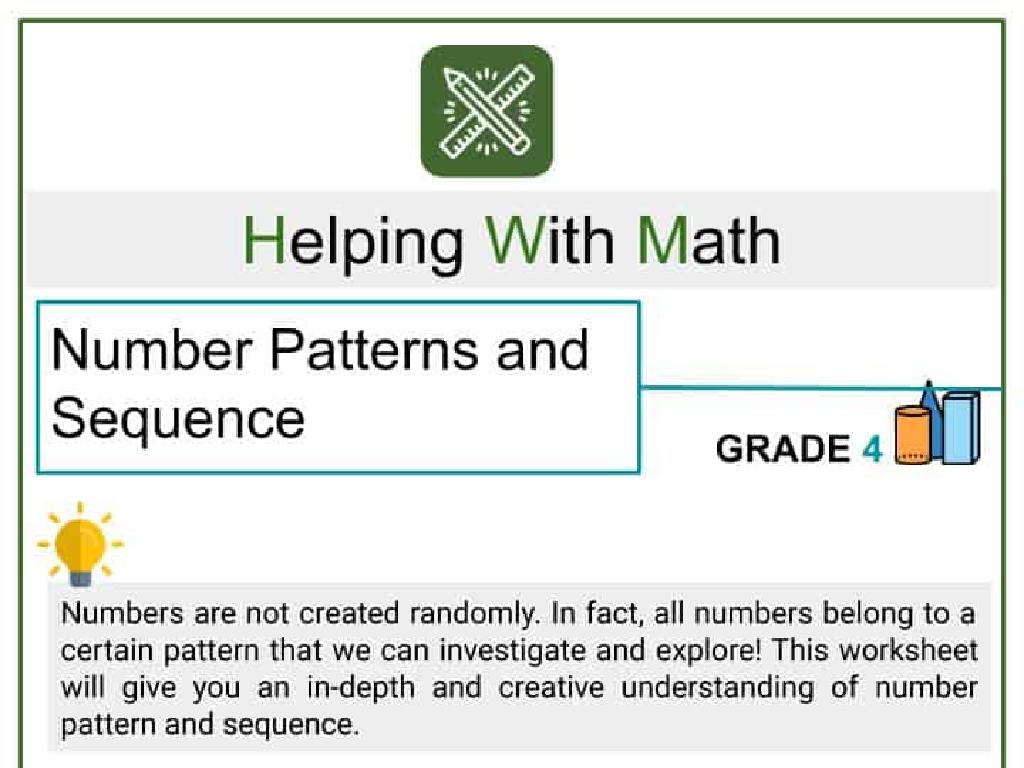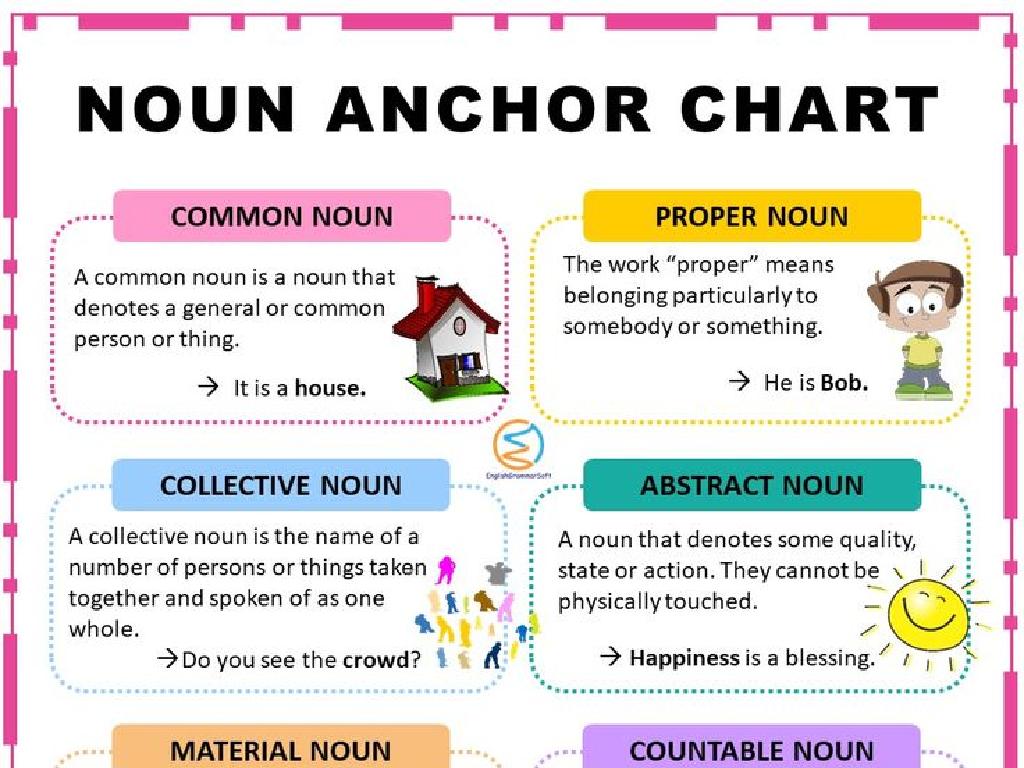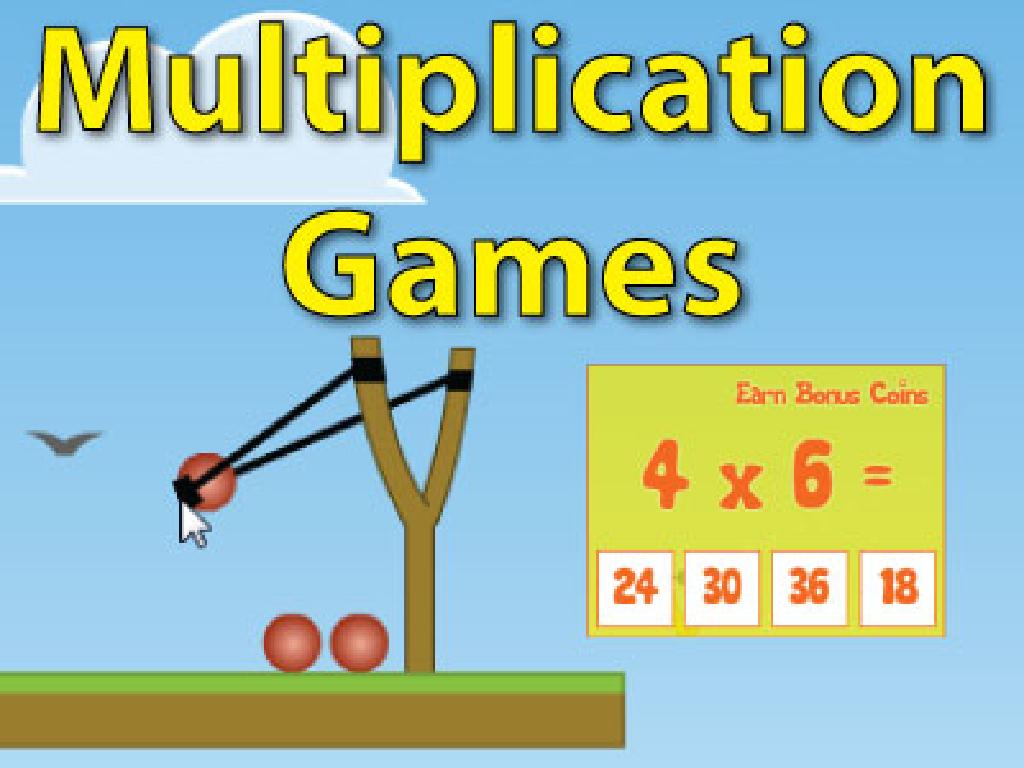Is The Word An Adjective Or Adverb?
Subject: Language arts
Grade: Third grade
Topic: Adjectives And Adverbs
Please LOG IN to download the presentation. Access is available to registered users only.
View More Content
Spicing Up Sentences: Adjectives and Adverbs
– What are adjectives and adverbs?
– Adjectives describe nouns, adverbs describe verbs.
– Making sentences exciting
– They add details like color, size, and how things are done.
– Adjective and adverb examples
– Adjective: ‘The blue sky.’ Adverb: ‘She sings beautifully.’
– Practice identifying them
– Find and highlight adjectives and adverbs in a book.
|
This slide introduces the concept of adjectives and adverbs to third graders, explaining their role in adding detail and interest to sentences. Begin by defining adjectives as words that describe nouns (e.g., ‘big’, ‘colorful’, ‘quick’) and adverbs as words that modify verbs, adjectives, or other adverbs (e.g., ‘quickly’, ‘very’, ‘well’). Use simple examples to illustrate how these parts of speech work within a sentence to make it more descriptive and engaging. Encourage students to think of their own examples and to practice identifying adjectives and adverbs in sentences, both in the classroom and at home. The goal is to help students recognize and use adjectives and adverbs to enhance their writing and speaking skills.
Understanding Adjectives
– Adjectives describe nouns
– Words that give more information about a person, place, or thing
– They specify ‘what kind’, ‘how many’, or ‘which one’
– ‘What kind’ like ‘fluffy’ dog, ‘how many’ as in ‘five’ cookies, ‘which one’ like ‘that’ cat
– Examples: ‘big’, ‘colorful’, ‘three’, ‘last’
– ‘Big’ elephant, ‘colorful’ flowers, ‘three’ candies, ‘last’ place in a race
|
This slide introduces the concept of adjectives to third-grade students. Adjectives are words that describe or modify nouns, giving more detail about them. They can tell us the quality of the noun (‘big’), the quantity (‘three’), or which specific one it is (‘last’). Use everyday examples that the students can relate to, such as describing their pets, toys, or items in the classroom. Encourage them to think of adjectives for objects around them and to use these descriptive words in their sentences to make their writing more vivid and precise.
Exploring Adverbs
– Adverbs describe actions and more
– They give more info about verbs, adjectives, or other adverbs
– They answer ‘how’, ‘when’, and ‘where’
– ‘How’ did they run? ‘When’ did they leave? ‘Where’ are they going?
– Common adverbs: ‘quickly’, ‘yesterday’
– ‘Quickly’ tells us how someone does something. ‘Yesterday’ is when something happened.
– Practice: Find adverbs in sentences
|
This slide introduces the concept of adverbs to third-grade students, explaining that adverbs are words that describe verbs, adjectives, or other adverbs. They often answer questions like ‘how’, ‘when’, ‘where’, ‘how often’, and ‘to what extent’. Provide examples such as ‘quickly’, ‘yesterday’, and ‘outside’ to illustrate the use of adverbs in sentences. Encourage students to think of adverbs as the words that add color to actions, times, and places. Instruct them to look for clues in sentences that answer the adverb questions. For practice, have students find and highlight adverbs in sentences from a story or their reading book.
Identifying Adjectives
– Finding adjectives in sentences
– Let s be detectives and spot the describing words!
– Adjectives describe nouns
– Words like ‘big’, ‘colorful’, and ‘soft’ tell us more about a noun
– Practice with a fun sentence
– ‘The fluffy cat sat on the shiny floor.’ – What words describe ‘cat’ and ‘floor’?
|
This slide is aimed at helping third-grade students understand and identify adjectives within sentences. Begin by explaining that adjectives are words that give us more information about nouns, such as what they look like, feel like, sound like, etc. Use examples that are relatable to the students. For the practice sentence, guide the students to identify ‘fluffy’ and ‘shiny’ as adjectives describing ‘cat’ and ‘floor’ respectively. Encourage the students to explain why these words are adjectives and how they enhance the sentence. This activity will help solidify their understanding of adjectives in a practical and engaging way.
Identifying Adverbs in Sentences
– Discover adverbs in sentences
– Adverbs describe how, when, where
– How did she sing? When and where did she sing?
– To what extent does the action happen?
– Does it tell us how much or how often something happens?
– Practice with a fun sentence!
– ‘She sang beautifully in the concert yesterday.’
|
This slide is aimed at helping third-grade students understand and identify adverbs within sentences. Adverbs are words that modify verbs, adjectives, or other adverbs and answer questions like how, when, where, and to what extent. Use the example sentence ‘She sang beautifully in the concert yesterday.’ to illustrate how ‘beautifully’ describes the manner in which she sang (how), and ‘yesterday’ describes the time of the action (when). Encourage the students to find adverbs in their favorite books or in sentences they create. This practical exercise will help them recognize adverbs in different contexts and understand their role in adding detail to a sentence.
Is It an Adjective or an Adverb?
– Understanding adjectives vs. adverbs
– Adjectives describe nouns, adverbs describe verbs, adjectives, or other adverbs.
– Describing nouns with adjectives
– If a word gives more info about a noun or pronoun, it’s an adjective.
– Adverbs enhance verbs
– When a word tells us more about a verb, it’s an adverb.
– Let’s practice with examples
– We’ll look at sentences and decide together.
|
This slide introduces the concept of distinguishing between adjectives and adverbs, which is a key component of grammar for third graders. Begin by explaining that adjectives are words that describe nouns or pronouns, giving more information about things like size, color, or quantity. Adverbs, on the other hand, modify verbs, adjectives, or other adverbs, often telling how, when, where, or to what extent something happens. Use clear, simple examples to illustrate the difference. For instance, ‘The quick brown fox’ uses ‘quick’ and ‘brown’ as adjectives to describe the fox, while ‘The fox runs quickly’ uses ‘quickly’ as an adverb to describe how the fox runs. During the practice activity, encourage students to identify words in sentences and determine whether they are adjectives or adverbs, reinforcing their understanding through application.
Interactive Practice: Adjectives vs. Adverbs
– Listen to the sentence carefully
– Thumbs up for adjectives
– Adjectives describe nouns, like ‘quick’ and ‘lazy’
– Thumbs down for adverbs
– Adverbs describe verbs, adjectives, or other adverbs, often ending in -ly
– Let’s practice with an example
– ‘The quick brown fox jumps over the lazy dog.’ – Identify the adjectives and adverbs
|
This interactive activity is designed to help students differentiate between adjectives and adverbs in a fun and engaging way. When you say a sentence, students will listen and then give a thumbs up if they hear an adjective, which describes a noun, or a thumbs down if they hear an adverb, which typically modifies a verb, an adjective, or another adverb. Use the example sentence to demonstrate how it works. Adjectives in the example are ‘quick’ and ‘lazy’ describing the fox and dog respectively. There are no adverbs in this sentence. Encourage students to explain their choices to foster understanding. Prepare a list of sentences with a mix of adjectives and adverbs for the activity.
Class Activity: Adjective and Adverb Hunt
– Pair up for a word hunt in books
– Find adjectives and adverbs
– Adjectives describe nouns, adverbs describe verbs
– Record your findings on the worksheet
– Write down the words and the sentences you found them in
– Class review of examples later
|
This activity is designed to help students recognize and differentiate between adjectives and adverbs within the context of literature they enjoy. By working in pairs, students can discuss and collaborate, enhancing their understanding. Provide clear instructions on how to identify adjectives and adverbs, emphasizing that adjectives modify nouns and pronouns, while adverbs modify verbs, adjectives, and other adverbs. Encourage them to look for clues such as the questions ‘how?’, ‘when?’, ‘where?’, and ‘to what extent?’ which adverbs often answer. After the hunt, facilitate a class discussion where students share their findings, reinforcing their learning through peer examples. Possible variations of the activity could include finding the most unusual adjective/adverb, categorizing the words based on their types, or creating their own sentences using the words they found.
Wrapping Up: Adjectives and Adverbs
– Excellent work on adjectives and adverbs!
– Homework: Craft 10 sentences
– Create sentences with new words learned today
– Use adjectives and adverbs correctly
– Ensure adjectives describe things and adverbs describe actions
– Recall: Adjectives for nouns, adverbs for verbs
– Example: ‘The quick (adjective) rabbit hops swiftly (adverb).’
|
Students have done a great job today in distinguishing between adjectives and adverbs. For homework, they are tasked to write 10 original sentences, applying their knowledge of adjectives and adverbs. This exercise will reinforce their understanding that adjectives are used to describe nouns (people, places, things), while adverbs are used to describe verbs (actions), often ending in ‘-ly’. Encourage creativity and the use of a variety of words. In the next class, ask students to share some of their sentences and explain the adjectives and adverbs they used. This will help solidify their grasp of the concepts and allow for peer learning.






